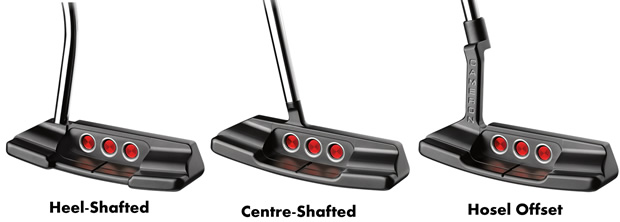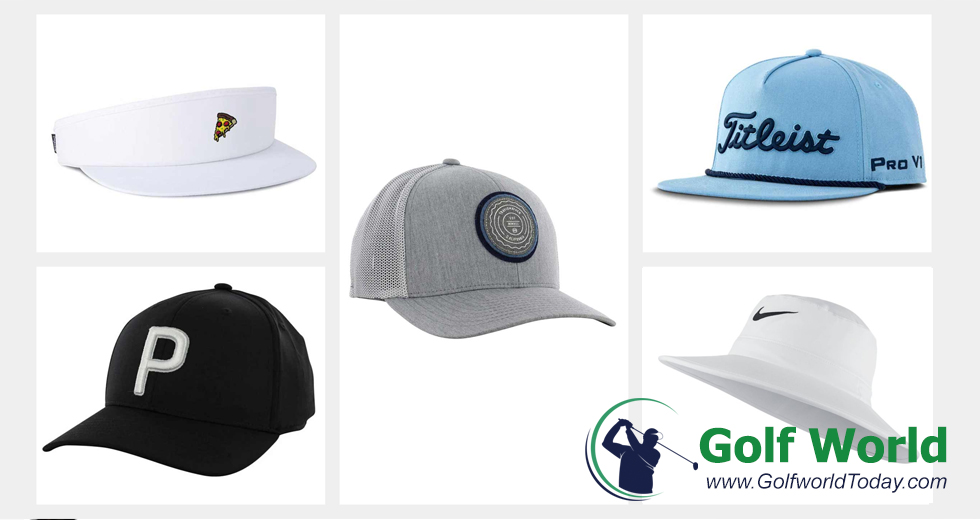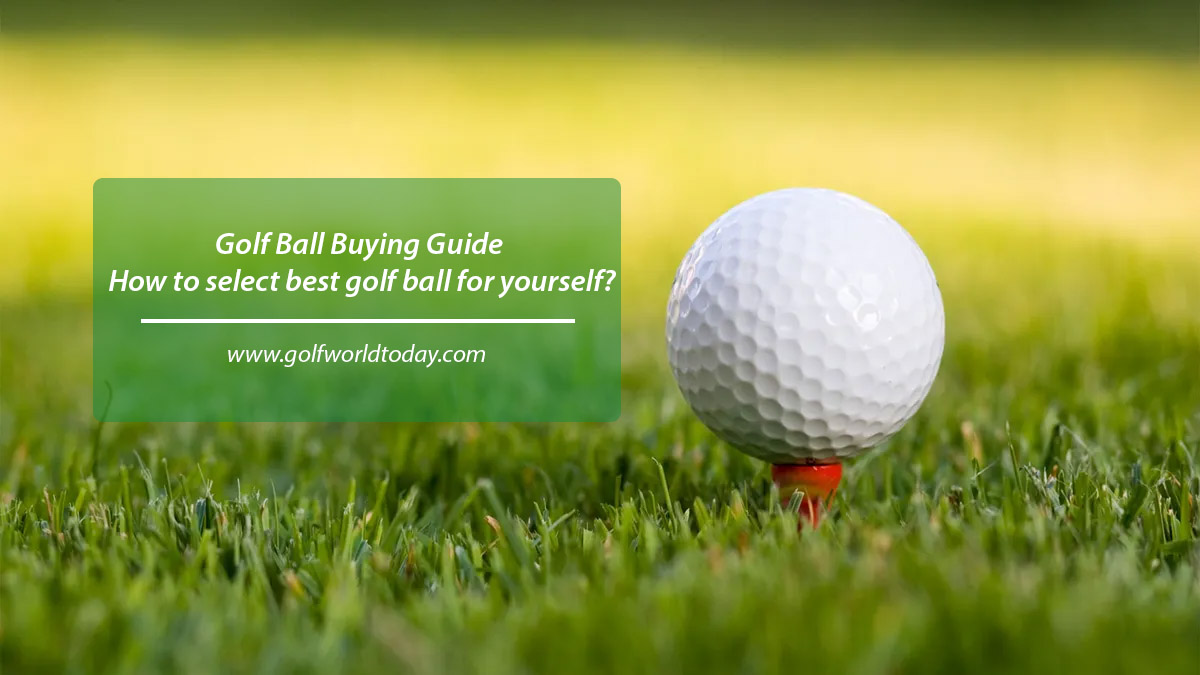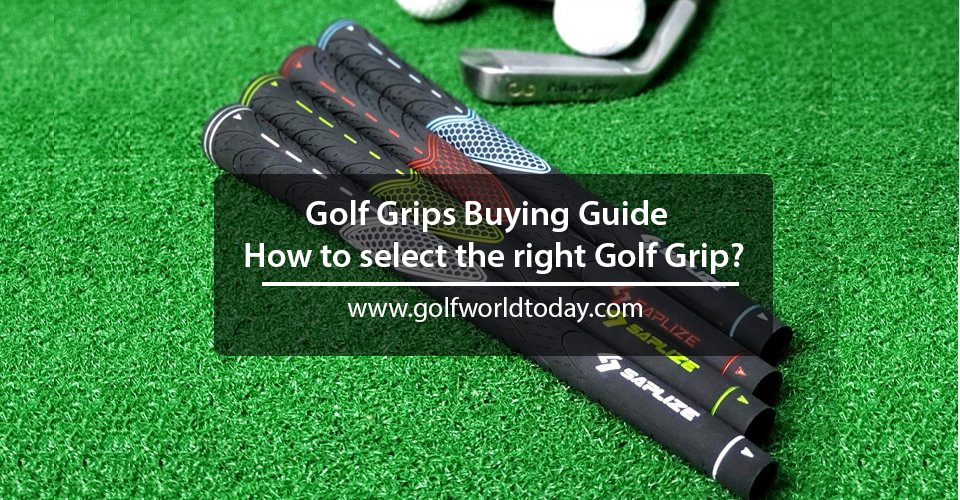Golf Putter Buying Guide – There is no doubting that the main one area of the game that causes everyday golfers probably the most amount of stress is putting. Many golf careers have ended suddenly after another three-putt and there are few sports that may offer the frustration to match putting.
The putter is by far the most used club in your bag and if you look at any professional tournament, it is althe majority of always the player that putts the very best that wins.
However, putter technology like all golf technologies is advancing to greatly help us all. New types of putter are re-inventing many golfers’ games and helping them lead a stress free golfing life.
The following information will inform you on recent technology and help you discover which putter may save you shots on the green.
Golf Putter Buying Guide – How to select the right golf putter?
Types Of Putter
Face Balanced Putters
Face Balanced describes putters that have a face that faces upwards when you balance the shaft on your own finger. This will mean that the centre of gravity is directly below the axwill be of the shaft. Encounter balanced putters will have a tendency to open less on the backswing and close much less on the follow-through, which explains why they are recommended to players with a straight putting stroke.
Toe Balanced Putters
Toe Balanced putters are putters whose toe wants points to the ground when you balance the shaft on your finger. This means the centre of gravity isn’t directly below the shaft axis. Toe balanced putters are more inclined to open and close throughout the stroke and are therefore better suited to players having an arc in their putting stroke.
Not all putters are designed to be either face or balanced. Many putters falmost all somewhere in between, with some degree of toe hang. Golfers will find if indeed they can match their stroke type to the right balance of putter, they will be more consistent on the greens.
You can find out which type of stroke you have by visiting a golf professional or utilizing a training aid like the iPing putting app.
Putter Head Designs
Blade Putters
The oldest and most traditional type of putter may be the blade. Using a relatively small head, its classic design was immensely popular in golf from 1900 to 1990 and continues to be used by players today.
The simple, flat look was easy to produce in the early days of golf club production and the soft hit a blade produced was likable on many types of greens. Traditionally suited to harder, faster greens that require a more delicate touch, blade putters are usually face balanced, meaning they’ll suit a new player with a straight putting stroke.
Peripheral Weighted Putters
The peripheral weighted or heel-toe weighted putter was the natural evolution of the blade putter. Long and thin at address, the design was could still be soft and delicate but with added weight in the heel and toe portions adding more consistency and forgiveness.
Made famous by the Ping Anser design of 1966, this shape of putter revolutionized the game and is still used by many of the top players in the world.
Traditionally toe-balanced, the length and design of the hosel means it can be altered to suit almost any stroke type.
Mallet Putters
Much like large heads in driver design made tee shots more consistent and forgiving, the mallet shaped putter offered the same benefits on the green. With more size to play with, manufacturers often employ various alignments aids and shapes on the rear of the top to help performers align to putts better.
The deep design of the putter’s head allows manufacturers to possess a lower and heavyer centre of gravity and also increasing as soon as of Inertia (MOI), which reduces spins and improves performance on off-centre putts. Therefore mallet putters are often face balanced and suitable for straight strokes
Putter Faces And Inserts
The type of face that you want on a putter depends on what feel your prefer, what ball you utilize and the speed of greens you typically putt on. For instance, you would not want to use a hard feeling baseball on fast greens with a firmer metal faced putter. You need to try and find the right mix of ball and putter face to complement the greens to that you putt on.
Feel with putting can sometimes be interpreted as sound. To discover how important sound would be to you, try placing ear plugs or headphones in when practicing your putting and observe how you react to not hhearinging the audio of the strike. If you like less noise, a soft insert could be for you.
Metal Faced Putters
The traditional putter face material is steel. Other types of metals have been used in the past and several are still used today: bronze, aluminium, brass, copper, zinc and titanium. The extremely strong and heavy nature of metal suits putter faces perfectly. Steel has a reputation for a difficult, yet responsive strike giving the those putters a good, controlled feel.
One great benefit on a metal-faced putter is the louder noise it produces. Immediately you can hear the type of connection you made on the ball which enables you to feel and hear where the centre of your putter is.
Some metal faced putters also feature milling on the face which makes them feel and sound softer as there is less material in contact with the ball. It could sound odd to possess a rough face nonetheless it does aid performance, even though the feel is not usually as soft being an insert putter.
Insert Faced Putters
Insert putters are basically metal putters with the metal face replaced with a light-weight nonmetal insert. The main advantage of utilizing a light insert is that the weight of the putter can be redwill betributed and put into the heel and toe of the putter, increasing the MOI and offering more forgiveness.
Many believe the drawback of these types of soft inserts is that they usually do not produce the sound of a metal face. Nearly all insert faces are made to promote a softer feel than traditional steel, even though some modern inserts are made to replicate the metallic sound and really feel of steel in a lighter-weight insert.
The positive side of inserts is that they enable you to play with a firmer cover ball and still have the same degree of feel as if you were utilizing a softer ball with a metal face.
Groove Faced Putters
A recent development has been the appearance of grooves on the face of a putter. This may seem to be the last thing you want but there exists a reason for this.
On any putt, on any green, a putter’s impact on the golf ball often results in skidding, sliding, back spinning, and even hopping before the ball can begin rolling on the eco-friendly. Even though struck on the right line, these effects will be the principal causes of missed putts. Therefore, the main element to more accurate putting would be to achieve forward rolling motion immediately upon striking the ball.
The grooves on a putter face can help achieve this forward motion and keep the ball online. Upon impact with the golf ball the grooves grip the surface of the ball and simultaneously lift the ball out of its resting position and impart an over-the-top rolling action.
Just to complicate matters grooved putters are usually metal faced, but there are now some insert putters that have grooves too. Much like all putters, trial and error may be the only way to decides what is right for you personally!
Putter Shafts & Hosels
Putters almost always have steel shafts to permit for a consistent, strong feel. Where the shtheft meets the putter head may be the hosel and there are some options:
Heel-Shafted Putters
On heel-shafted putters, the shaft connects directly with the putter head on the end nearest to the golfer.
Centre-shafted putters
Centre-shafted putters connect just as however they meet the putter in the centre of the top lengthwise. Choosing a centre-shafted putter is largely right down to personal preference. All golfers pay close attention to the hosel of the putter plus some like to have the hosel at the centre to lead the ball towards the hole, others prefer heel-shafted putters that let them guide the putt with the putterhead.
Hosel Offset
Another variation in some putters is an offset at the hosel. This when the hosel is bends backwards to move the bottom of the shaft ahead of the face of the putter to draw a player’s hands ahead of the ball through impact. Virtually all putters have some degree of offset in them (as do most golf clubs), but the example below can be your standard offset, whereas the illustrations of centre and heel shafted putters shown below have little or no offset.

Shaft Lengths
Finding the right amount of putter for your height and stroke is paramount to producing quality strikes and consistent putting. The incorrect length of putter can result in bad posture and inconsistent contact.
Putter length is measured from the sole of the putter below the hosel to the very best of the shaft. The rules state that a putter shaft must be at least 18 inches long, but besides that there is no maximum limit. Professionals and amateurs alike have tested with everything from small putter, to chest putters, to putters that rest on your own chin and to the most typical oddly sized one in the current game, the belly putter. The next information suggests the possible benefits of different lengths of putter.
Traditional Length (32-36 inches)
Still the most common length of putter although not as dominant since it has been, the standard 33-36 inch putter helps create a pendulum swing in your puttwithing stroke. Acting being an extension of your arms, it should be the perfect height to allow you arms to simply hang down and grip. This enhances a player’s capability to use a pendulum-like stroke to provide the putt as true a roll as you possibly can.
Belly Putter (41-46 inches)
The latest craze in the golf world has definitely been the introduction of belly length putters. The belly putters bring stability to the putt by creating a third point of contact. The three points are the two hands and the stomach. The putter could be anchored against the body, thereby not changing the posture of the golfer.
In 2013 the R&A and USGA deemed belly or anchored putting methods as illegal so when of January 1st, 2016, this style will never be legal in any sanctioned competition.
It is however important to understand that the technique of anchoring is illegal, not the length of the putter. Many players still prefer to work with a longer putter, nevertheless deploying it in a non-anchored technique.
To combat the anchoring ban, some manufacturers have added weight to the grip of longer putters, creating a counterbthelanced performance that mirrors closely the advantages of anchoring, however it is legal (for now!).
Long Putters (48-52 inches)
By far the least common of the three is the long or ‘broomhandle’ putter. Varying between resting above the belly button, the chest, or even the chin these putters differ from even the belly putter.
They require a complete change in grip to belly putters and traditional putters which may be used with the normal putting grip. Most players grip the club with their left hand holding the putter into their body (thumb up) and the proper hand working as a claw in the middle section of the putter to pull and push through the type of the putt, like a pendulum. This makes the complete stroke of long putter in the power of the right hand. It is a tough skill to understand and something that is increasingly hard to execute in the wind.
This method of putting is considered anchoring and thus may also be banned from 2016 onwards.
Putter Grips
Unlike all other clubs in your bag, many different grip options are available to your putter. Beneath the rules of the game, the putter is the only grip that can have a flat edge. Commonly thwill be flat edge is positioned facing away from your body, to help guide you to exactly where your thumbs should be on your grip. Manufacturers are suffering from a host of materials designed for putters.
Different sizes or diameters may also be offered to improve your ability on the greens. A thicker grip helps take the hands and wrists out of the stroke, which is what golfers seek to do to improve their putting. The drawback of a thicker grip will be that you will not get the same level of feel of a standard hold as the vibrations coming up the shaft will be dampened down. If you are a feel putter or have a stroke which involves lots of wrist action, then you are usually more suitable for a standard grip.
For more information see our Golf Grip Buying Guide.





